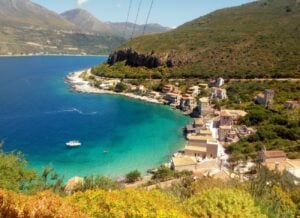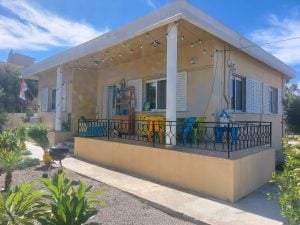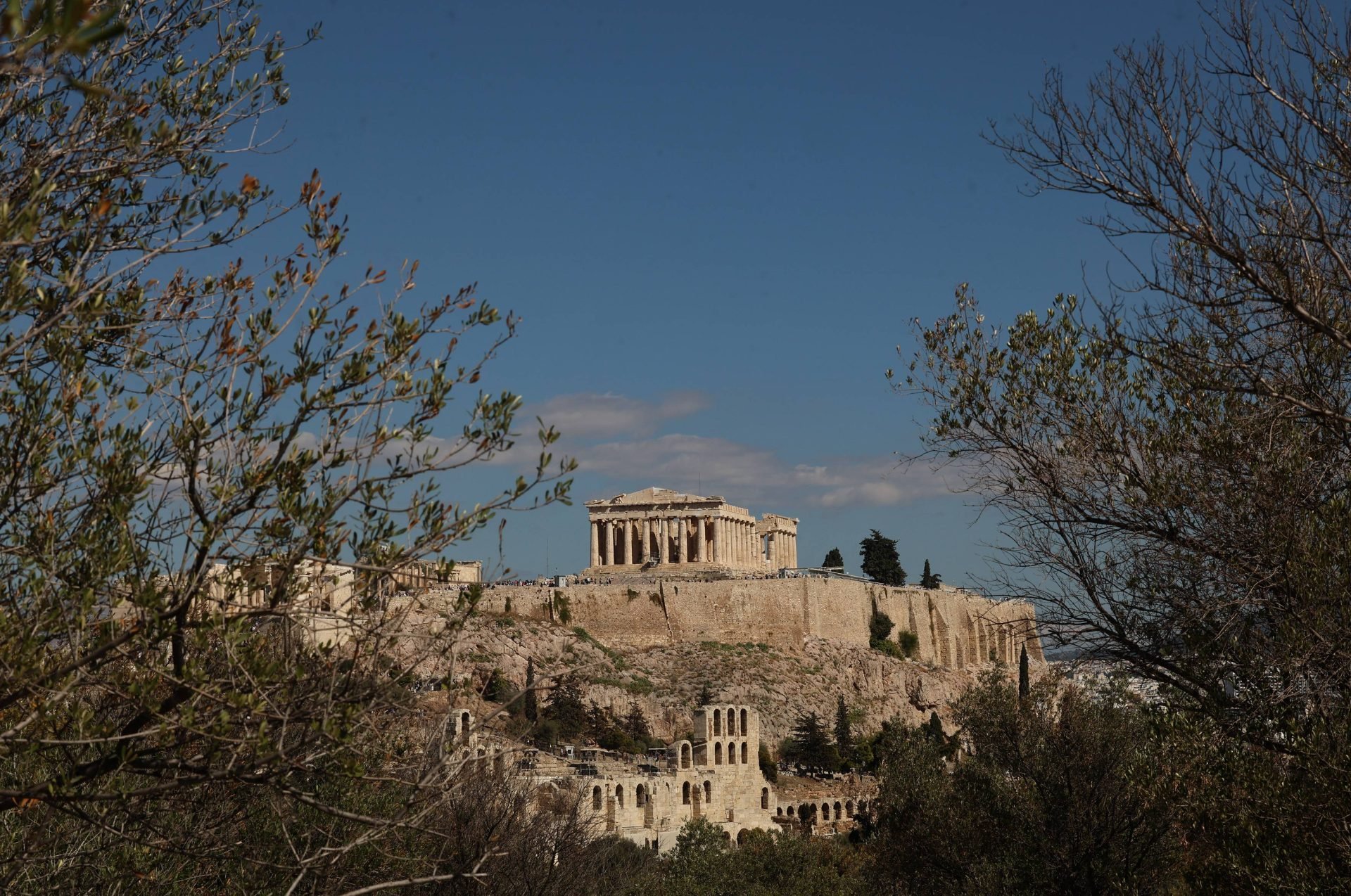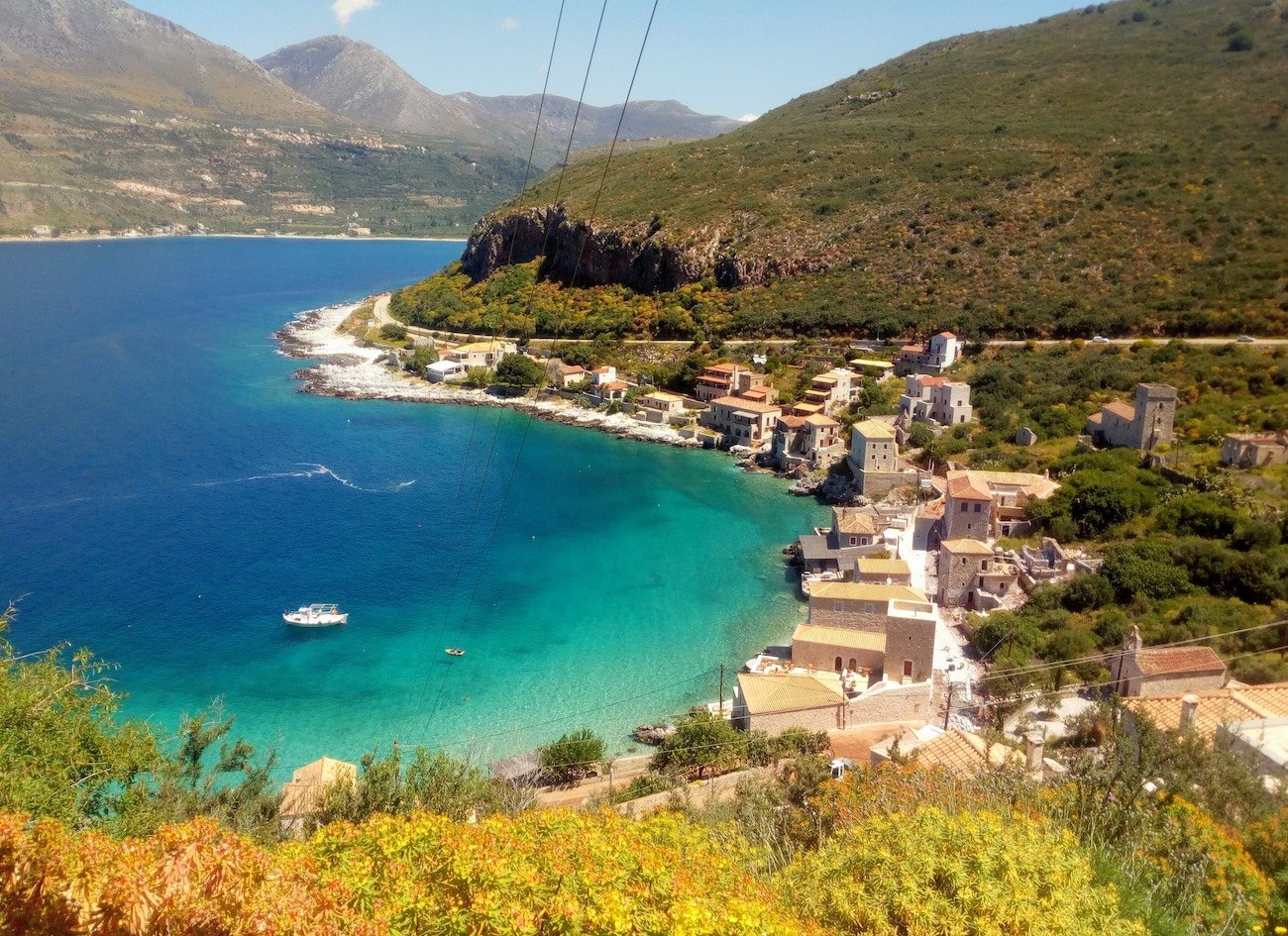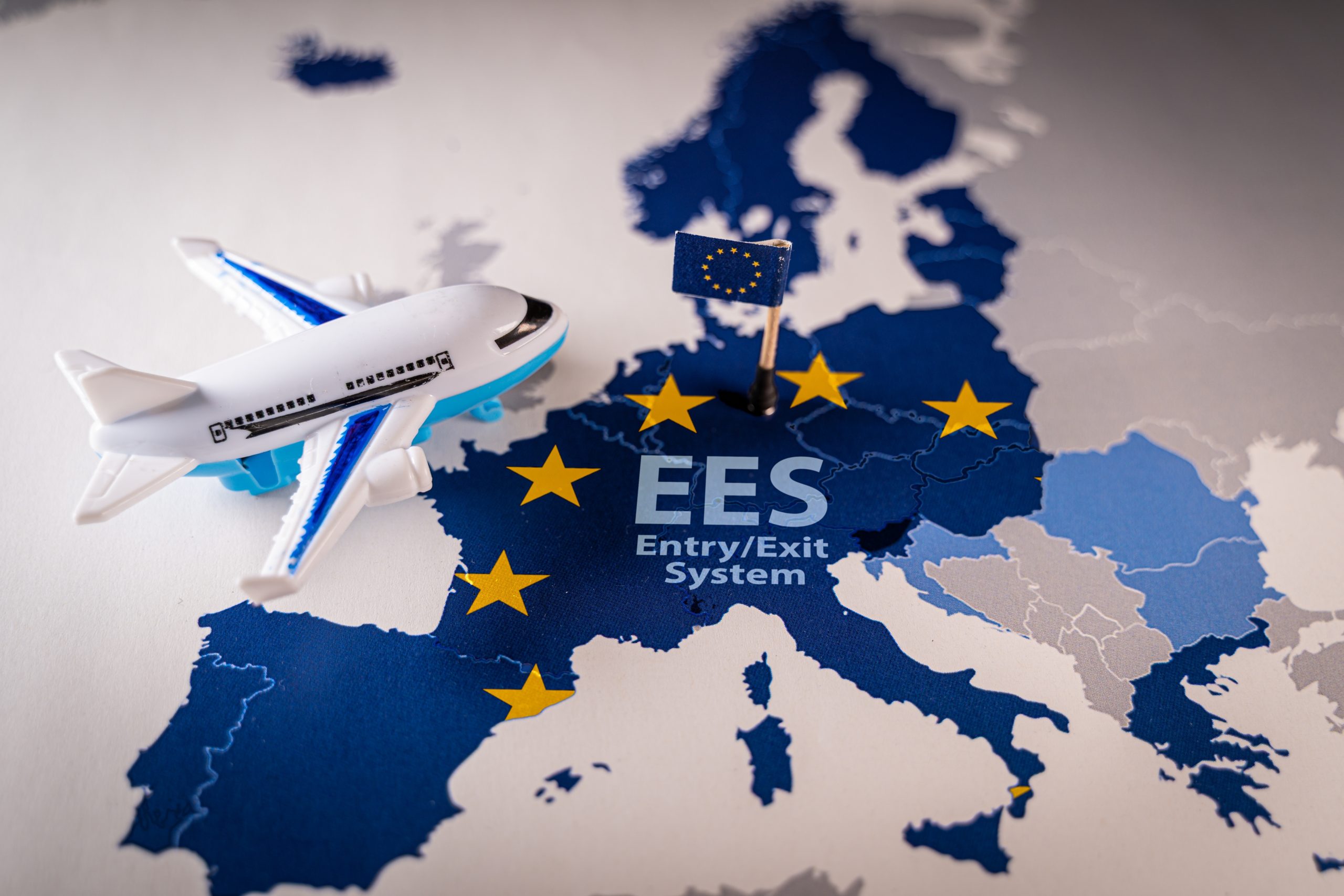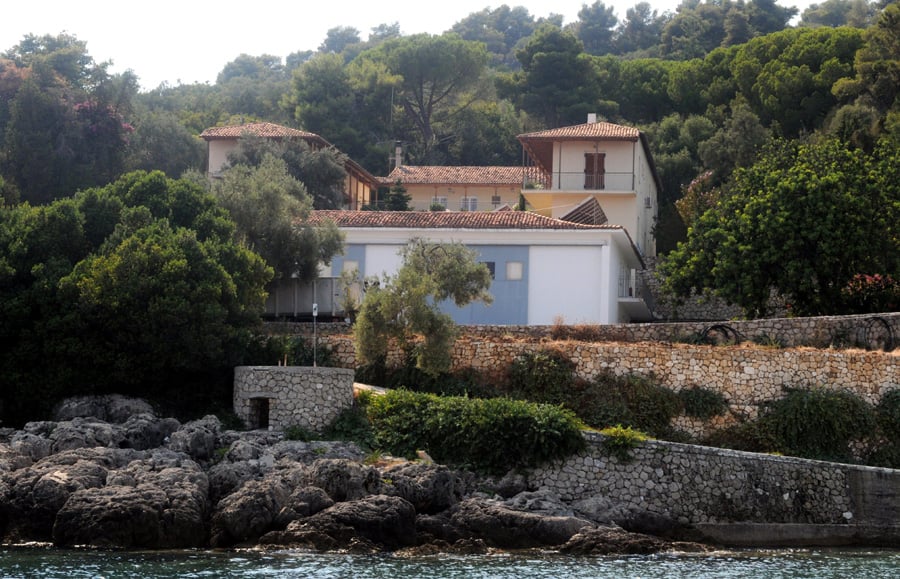Der öffentliche Nahverkehr auf Kreta ist mäßig gut. Im Mittelpunkt steht das KTEL-Busnetz, das die größeren Städte und beliebten Touristenorte auf der ganzen Insel miteinander verbindet. Das System ist auf den Hauptstrecken zwischen Städten wie Heraklion, Chania und Rethymno zuverlässig, in ländlichen Gebieten ist der Service jedoch eingeschränkt. Die Busse verkehren während der Touristensaison regelmäßig, in den Wintermonaten jedoch weniger häufig.
Wie sieht das öffentliche Verkehrssystem auf Kreta aus?
Das öffentliche Verkehrssystem auf Kreta stützt sich hauptsächlich auf die KTEL-Busnetzdie umfassende Dienste in den vier Hauptregionen der Insel anbietet. KTEL Heraklion-Lasithi deckt den östlichen Teil der Insel ab, während KTEL Chania-Rethymno die westlichen Regionen bedient. Diese Betreiber bieten Intercity-Verbindungen, innerstädtische Strecken innerhalb der großen Städte sowie Verbindungen zu beliebten Stränden und archäologischen Stätten an.
Das kretische Bussystem umfasst moderne, klimatisierte Reisebusse für den Fernverkehr und kleinere Busse für den städtischen Nahverkehr. Die meisten Busse zeigen Routeninformationen sowohl auf Griechisch als auch auf Englisch an, was die Navigation für internationale Besucher erleichtert. Das Netz verbindet alle größeren Flughäfen, Häfen und touristischen Ziele, obwohl die Abdeckung in den bergigen Gebieten im Landesinneren spärlich ist.
Busbahnhöfe in größeren Städten wie Heraklion und Chania bieten Einrichtungen wie Fahrkartenschalter, Wartebereiche und Informationsschalter mit mehrsprachigem Personal. Die Infrastruktur hat sich in den letzten Jahren erheblich verbessert. An den wichtigsten Terminals werden Abfahrtszeiten und Streckeninformationen auf digitalen Displays angezeigt.
Wie zuverlässig und häufig fahren die Busse auf Kreta?
Der Busverkehr auf Kreta ist im Allgemeinen auf den Hauptrouten zuverlässig, mit Pünktlichkeit der Intercity-Dienste den ganzen Tag über. Die Hauptstrecken zwischen Heraklion, Chania, Rethymno und Agios Nikolaos verkehren in der Hochsaison alle 30-60 Minuten. Stadtbusse innerhalb der Städte verkehren in der Regel alle 15-30 Minuten auf den Hauptstrecken.
Die Frequenz schwankt zwischen Sommer- und Wintermonaten erheblich. Während der Touristensaison (Mai bis Oktober) wird die Frequenz erhöht, um die Nachfrage der Besucher zu befriedigen, wobei einige Strandstrecken im 20-Minuten-Takt bedient werden. Im Winter wird die Frequenz um etwa 30-50% reduziert, was vor allem die ländlichen und küstennahen Strecken betrifft.
Ländliche Strecken und Verbindungen zu kleineren Dörfern werden seltener bedient, oft mit nur 2-4 Abfahrten täglich. Der Wochenendverkehr ist im Allgemeinen eingeschränkt, und einige abgelegene Ziele werden sonntags nicht bedient. Witterungsbedingungen beeinträchtigen den Betrieb nur selten, obwohl es in extremen Situationen zu vorübergehenden Verspätungen auf Bergstrecken kommen kann.
Welche Gebiete auf Kreta sind am besten mit öffentlichen Verkehrsmitteln zu erreichen?
Im nördlicher Küstenkorridor genießt die beste Anbindung an den öffentlichen Nahverkehr, mit häufigen Verbindungen zwischen Chania, Rethymno, Heraklion und Agios Nikolaos. Wichtige touristische Ziele wie Knossos, die Lagune von Balos und der Strand von Elafonisi werden in den Sommermonaten regelmäßig mit Bussen angefahren.
In den städtischen Gebieten der vier größten Städte gibt es umfassende lokale Busnetze. Heraklion bietet hervorragende Verbindungen zum Flughafen, zum Hafen und zu den umliegenden Stränden. Der Nahverkehr in Chania verbindet die Altstadt, das Hafengebiet und die nahe gelegenen Küstenorte gut miteinander.
Beliebte Touristenstrände an der Nordküste, darunter Falassarna, Stavros und Vai, werden saisonal von Bussen angefahren. Die südlichen Küstengebiete und Bergregionen sind jedoch nur begrenzt angebunden. Dörfer in der Region Sfakia, Teile der Hochebene von Lasithi und abgelegene Strände müssen oft mit privaten Verkehrsmitteln oder organisierten Touren erreicht werden.
Für diejenigen, die erwägen Immobilienkauf in GriechenlandDie Kenntnis der Verkehrsanbindungen ist von entscheidender Bedeutung, wenn es darum geht, Standorte für Ferienhäuser oder ständige Wohnsitze zu bewerten.
Was sind die wichtigsten Alternativen zu öffentlichen Verkehrsmitteln auf Kreta?
Autovermietung ist nach wie vor die beliebteste Alternative, die völlige Flexibilität bietet, um abgelegene Strände, Bergdörfer und archäologische Stätten zu erkunden. Internationale und lokale Autovermietungen operieren von Flughäfen, Häfen und Stadtzentren aus und bieten wettbewerbsfähige Preise, insbesondere für längere Buchungen.
Taxidienste sind in städtischen Gebieten und touristischen Zonen weit verbreitet, wobei sich die Kosten für längere Fahrten schnell summieren. Viele Fahrer sprechen einfaches Englisch und bieten Touren zu beliebten Zielen zum Festpreis an. In der Hochsaison wird eine Vorbestellung empfohlen.
Organisierte Touren bieten einen bequemen Zugang zu zahlreichen Attraktionen, ohne dass man selbst fahren muss. Reiseveranstalter bieten Tagesausflüge zur Samaria-Schlucht, zur Balos-Lagune und zur Insel Spinalonga an, einschließlich Transport und Führung. Diese Touren eignen sich für Besucher, die einen strukturierten Reiseplan bevorzugen.
Radfahren und Wandern eignen sich gut für die Erkundung der Umgebung, insbesondere in den historischen Stadtzentren und auf den Küstenwegen. Mehrere Unternehmen vermieten Fahrräder und Elektrofahrräder, obwohl Kretas bergiges Terrain das Radfahren auf bestimmte Gebiete beschränkt. Der Verleih von Motorrädern und Motorrollern bietet für erfahrene Fahrer eine mittlere Flexibilität.
Wie viel kosten die öffentlichen Verkehrsmittel auf Kreta und wie bezahlt man?
Die öffentlichen Busse auf Kreta fahren auf einem entfernungsabhängiges Tarifsystemwobei kurze Fahrten im Stadtverkehr deutlich weniger kosten als Überlandfahrten. Die Tarife reichen von preisgünstigen lokalen Fahrten bis hin zu moderaten Tarifen für Fahrten quer über die Insel. Kinder unter sechs Jahren fahren kostenlos, während Studenten und Senioren mit einem entsprechenden Ausweis ermäßigte Tarife erhalten.
Die Bezahlung erfolgt in bar direkt beim Fahrer, wobei das genaue Wechselgeld geschätzt wird. Fahrkartenschalter an den großen Busbahnhöfen verkaufen Fahrkarten im Voraus und geben Auskunft über die Route. Auf einigen städtischen Strecken kann man kontaktlos bezahlen, aber Bargeld ist auf der ganzen Insel die zuverlässigste Option.
Mehrtageskarten bieten Einsparungen für Vielreisende und sind an den Hauptterminals und in einigen Hotels erhältlich. Gruppenrabatte gelten für Gruppen von zehn oder mehr Fahrgästen auf Intercity-Strecken. Es gelten Gepäckbeschränkungen, wobei auf einigen Strecken zusätzliche Gebühren für große Koffer anfallen.
Was sollten Sie wissen, bevor Sie öffentliche Verkehrsmittel auf Kreta benutzen?
Grundlegende griechische Sätze zu verstehen ist hilfreich, obwohl die meisten Fahrer und Bahnhofsangestellten in den Touristengebieten funktionelles Englisch. An den Bushaltestellen werden oft nur griechische Informationen angezeigt, so dass es sich auf ländlichen Strecken als nützlich erweist, das Fahrtziel in griechischen Buchstaben zu haben.
Seien Sie 10-15 Minuten früher an den Bushaltestellen, insbesondere bei Überlandverbindungen, da die Abfahrtszeiten im Allgemeinen strikt eingehalten werden. Die Busse dürfen nicht an jeder ausgewiesenen Haltestelle halten, es sei denn, die Fahrgäste geben ein deutliches Signal oder andere warten auf den Einstieg.
Im Sommer können die Temperaturen extrem hoch sein, daher sollten Sie bei längeren Fahrten klimatisierte Überlandbusse den Nahverkehrszügen vorziehen. Nehmen Sie Wasser und Sonnenschutz mit, da es an einigen Haltestellen keinen Unterstand gibt. Abends verkehren deutlich weniger Busse, vor allem zu den Strandorten.
Der Gepäckraum ist in Stadtbussen begrenzt, während Überlandbusse ausreichend Stauraum bieten. Die Zugänglichkeit ist unterschiedlich, wobei neuere Busse bessere Einrichtungen für Fahrgäste mit Mobilitätsproblemen bieten. Planen Sie alternative Verkehrsmittel für Fahrten am frühen Morgen oder am späten Abend ein, wenn das Verkehrsaufkommen gering ist.
Ganz gleich, ob Sie Kreta als Tourist erkunden oder die Insel für eine Immobilieninvestition in Betracht ziehen, die Kenntnis der Verkehrsmöglichkeiten hilft Ihnen, fundierte Entscheidungen über Standort und Erreichbarkeit zu treffen. Wenn Sie eine persönliche Beratung über Kretas Regionen und ihre Anbindung wünschen, wenden Sie sich bitte an Kontakt unsere lokalen Experten, die die Infrastruktur der Insel genau kennen.



